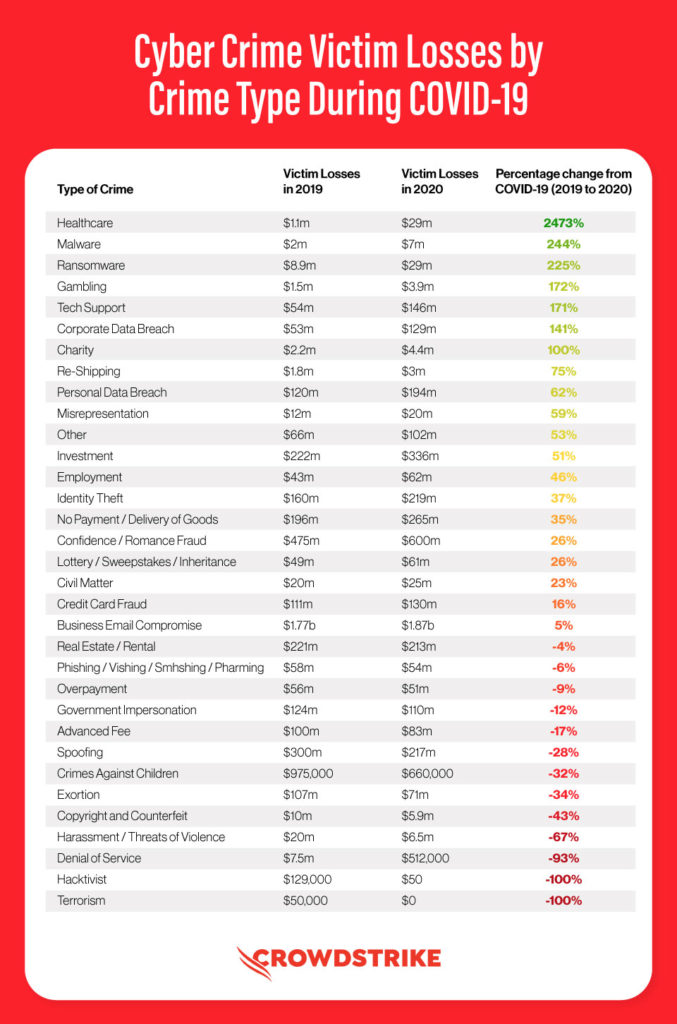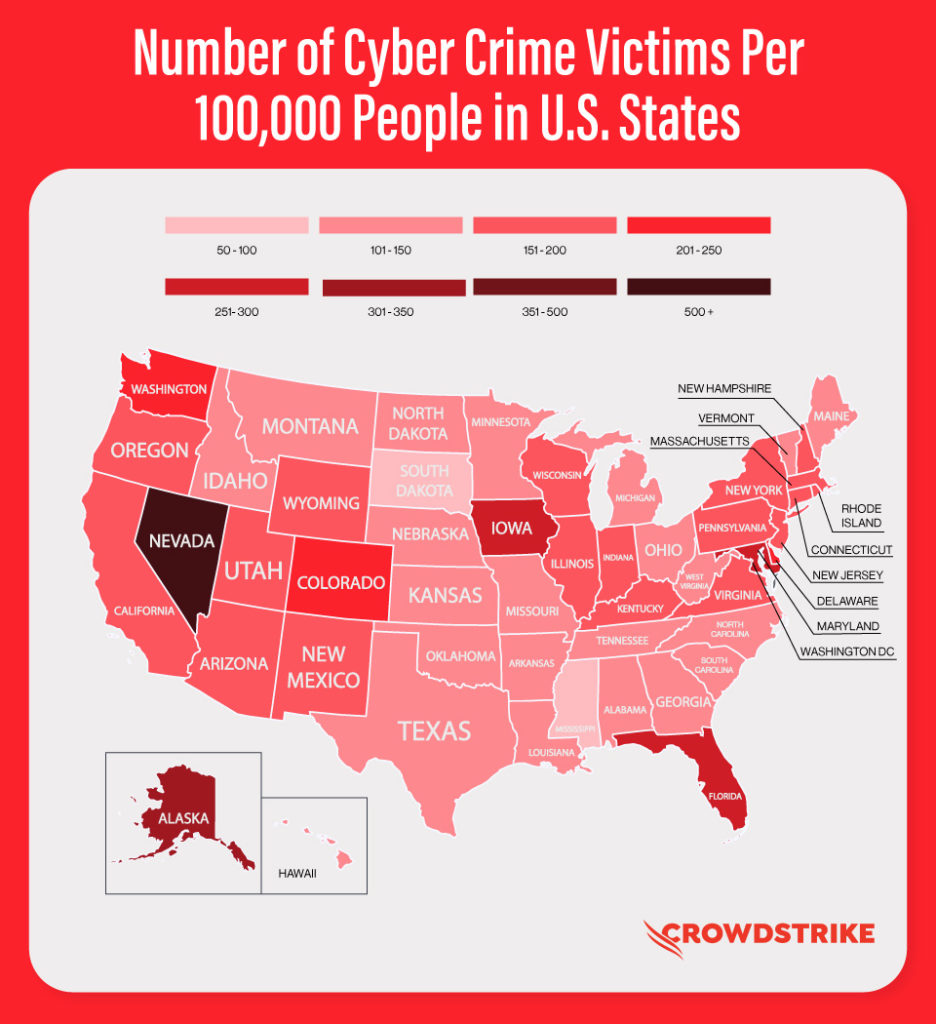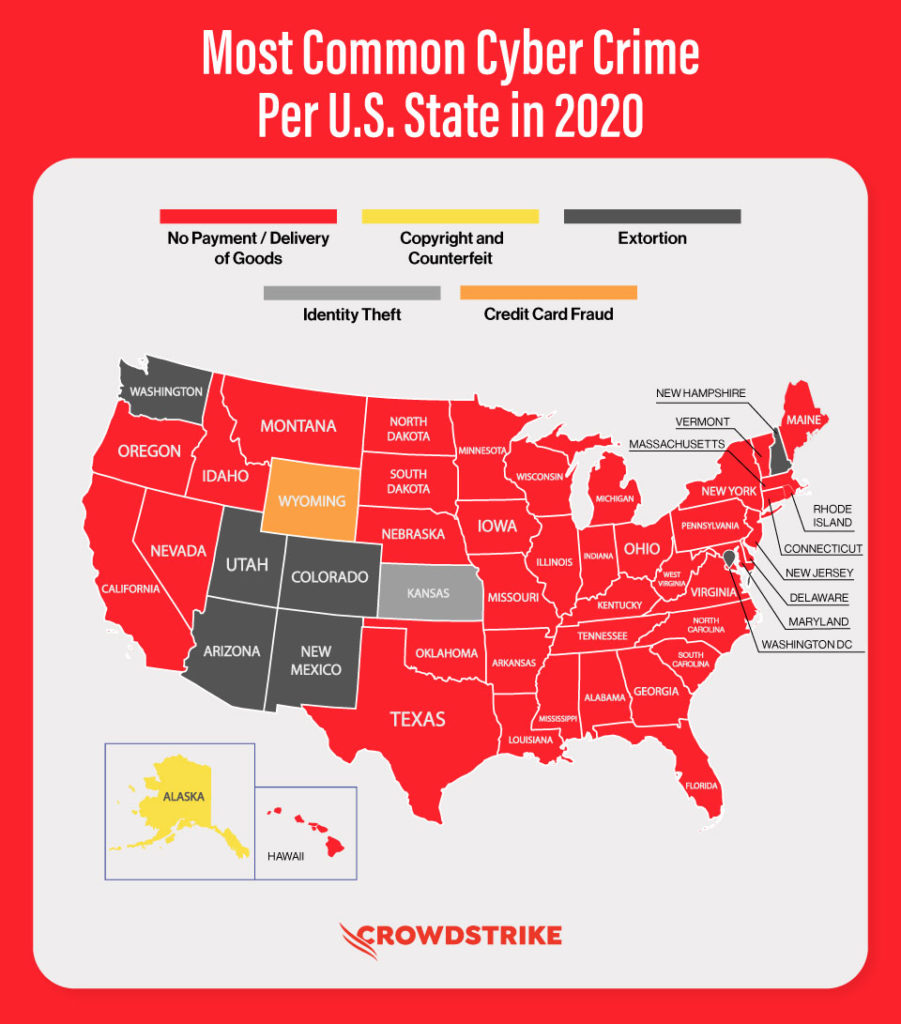2020 was a record-breaking year, largely for the wrong reasons. The FBI have just added another record to 2020’s collection. Last year saw the highest amount of cyber crime complaints, 791,790.
But how have financial losses from cyber crime changed? And where in the U.S. is the most affected?
The team here at CrowdStrike have analyzed the 2020 FBI Internet Crime Report and assessed the insights that may have been missed to the naked eye.
How have financial losses from cyber crime changed from COVID-19?

It is health care related cyber crime that has seen the biggest rise in financial losses from COVID-19. Financial losses have increased 2,473% since COVID-19.
Typical types of healthcare related cyber crime include:
- Fake insurance cards
- Health insurance marketplace assistance
- Stolen health information
- Medication diversion / malpractice
These tactics relate to both private enterprise and government care programs. For example, sensitive information relating to COVID-19 numbers and or treatments would be included.
In total the FBI recorded 28,500 complaints that were of direct relevance to COVID-19. Most of these were related to the Coronavirus Aid, Relief, and Economic Security Act (CARES Act). Some scams emerged relating to vaccinations, whereby people have been asked to pay for shots out of their own pockets or to provide personal information for an appointment.
Elsewhere, malware and ransomware remain prominent tactics and financial losses from these continue to rise.
Where in the U.S. is the most vulnerable to cyber crime?

While the FBI report shows California has the most amount of cyber crime complaints (26,379), California also has the largest population in the U.S.
CrowdStrike took a deeper look and found the most affected state per capita and per 100,000, indicating where in the U.S. is most likely to fall for cyber crime tactics.
Above we can see that it is Nevada that is most vulnerable to cyber crime. Not only are they the most affected overall, but they are the most affected by the following cyber crime types:
- Credit card fraud
- Tech support scams
- Copyright & counterfeit scams
- Harassment scams
But despite it being highest across all states, Nevada itself was most vulnerable to ‘No Payment / Delivery of Goods’. This is where consumers pay for goods only for them not to arrive or businesses sell goods for the money not to be transferred.
This is the most common cyber crime type across the whole of the U.S. and there are only 9 states where this wasn’t the most popular. You can see this highlighted below.
The most popular cyber crime per state

Just 18% of states don’t have ‘No Payment / Delivery of Goods’ as their top cyber crime type. Extortion is another popular tactic, 10% of states have this as their most vulnerable cyber crime type.
Extortion involves the unlawful extraction of money or property from intimidation. This can include threats of physical harm, criminal prosecution or public exposure.
Alaska was the only state to fall for copyright and counterfeit fraud (stealing other people’s inventions or trade ideas) more than any other type, while Wyoming was the only state that fell for credit card fraud more than other crimes. Finally, Kansas is the most vulnerable to identify theft.
Conclusion
The evidence is there for us to see, cyber crime is on the rise across all states. If you encounter any type of cyber crime, be sure to report it to the FBI immediately via tips.fbi.gov or to your nearest FBI office.
If you’d like to learn more about how to keep yourself secure online, browse our cybersecurity 101 center and resource library.







